Crape Myrtle Bark Scale, a New Pest in Pennsylvania Landscapes
In May of 2021, we began seeing darkened stems and black moldy growth on crape myrtles in Chester County, carrying over from an insect infestation in the fall of 2020. To recognize that these symptoms were not caused by crape myrtle aphids (common), samples were collected and submitted to the Insect Diagnostic Laboratory at Penn State. These samples revealed the first recorded incidence of crape myrtle bark scale (CMBS) in the state of Pennsylvania. This spring, calls regarding damaged crape myrtles have become much more common, and diagnosis is almost always this insect, which we have now also found in Delaware County. This is bad news for Pennsylvania’s crape myrtles, one of the most ubiquitous and attractive flowering plants in the landscape.
How Crape Myrtle Bark Scale Came to Pennsylvania
Crape myrtle bark scale is an invasive insect introduced to the United States from Asia in the early 2000s. The insect was initially collected and confirmed near Dallas, Texas in 2004, and detections have slowly moved eastward across southern states, with detection in Arkansas in 2013, North Carolina in 2018, and Maryland in 2020. This insect has been detected in 18 states (including DC), and the Pennsylvania infestation is the northernmost detection to date.
Initial models suggested that this insect would not move north of USDA Growing Region/Plant Hardiness Zone 8 (coastal Virginia and North Carolina); however, the Philadelphia area is precisely aligned with Beijing, China (~40o N Latitude), which is the northernmost range of this insect in its native land. Likely, this pest can survive in any geographic region where crape myrtles are a realistic landscape option; as winter hardiness is bred into crape myrtles, both the plant and the bug will move further north. In general, low temperatures will kill the tree before killing the pest, which can survive through winter at any life stage, from egg to adult.
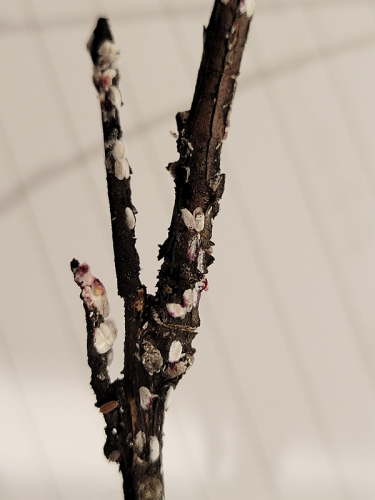
The Damage Crape Myrtle Bark Scale Causes
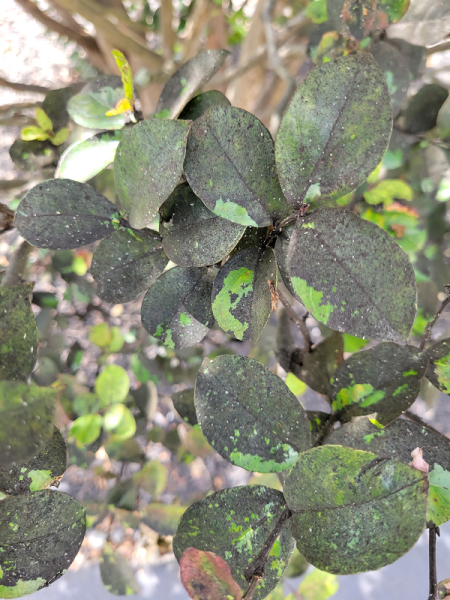
Crape myrtle bark scale (CMBS) is a serious, direct, and primary pest of crape myrtles; however, an infestation of this pest alone will rarely kill trees outright. Instead, damage to crape myrtles is most commonly seen as the development of black sooty mold on the bark and leaves of the tree, and black sooty mold is just what it sounds like: a gray to black moldy growth covering leaves and bark.
Aside from the aesthetic problems of having ornamental trees turn black, heavy infestation with CMBS will delay foliar emergence (leaf-out) in spring and can severely limit flower growth (up to 70% loss of blossoms). In addition, the black sooty mold is growing on the insect’s excrement, which is very high in sugars and commonly attracts masses of unwelcome stinging insects such as wasps and hornets. This phenomenon is similar to what one sees locally, accompanying high infestations of spotted lanternflies on maples, willows, styrax, and ailanthus.
Identifying Infestation
Trees suspected of infestation by Crape Myrtle Bark Scale can be confirmed quickly since this scale is the only bark scale active on crape myrtles and is one of only two direct pests that produce black sooty mold on these trees.
The most common symptom of an infestation is a general darkening of the bark, which can be seen in spring, especially when infested trees are close to uninfested trees. Closer examination will reveal clusters of white bumps or tufts, which are the silken sacs that the bugs have spun to either:
- Lay eggs in and die (adult females), or
- Protect themselves during metamorphosis (males)
Looking even closer, the individual insects (eggs, nymphs, pupae, and adults) are bright pink, and smashing the white silken bumps with a fingernail produces a blob of dark pink goo.
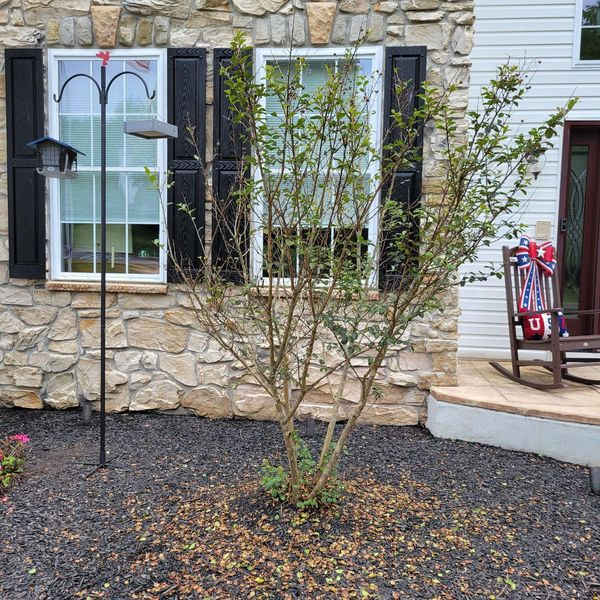
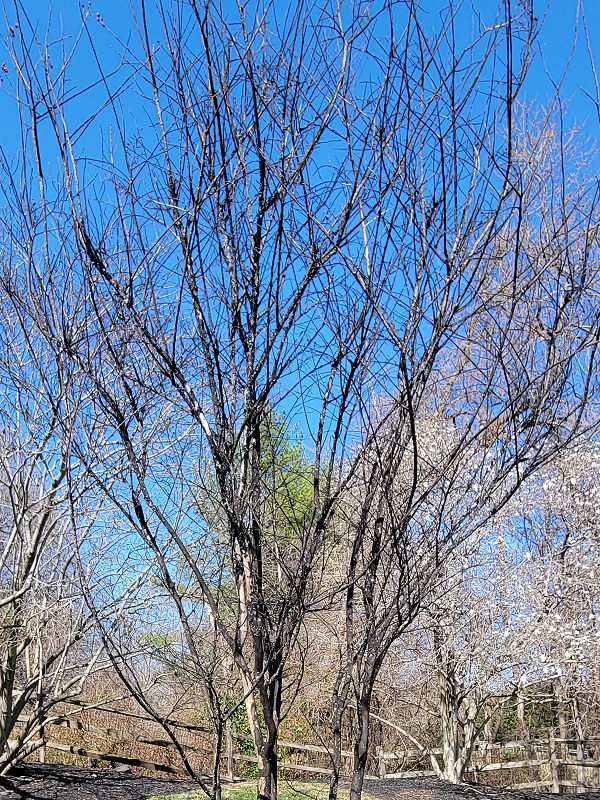
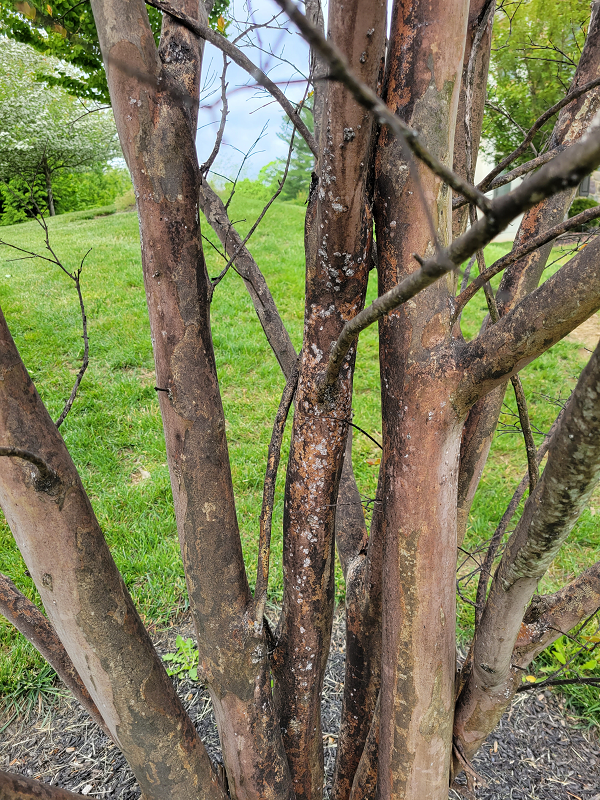
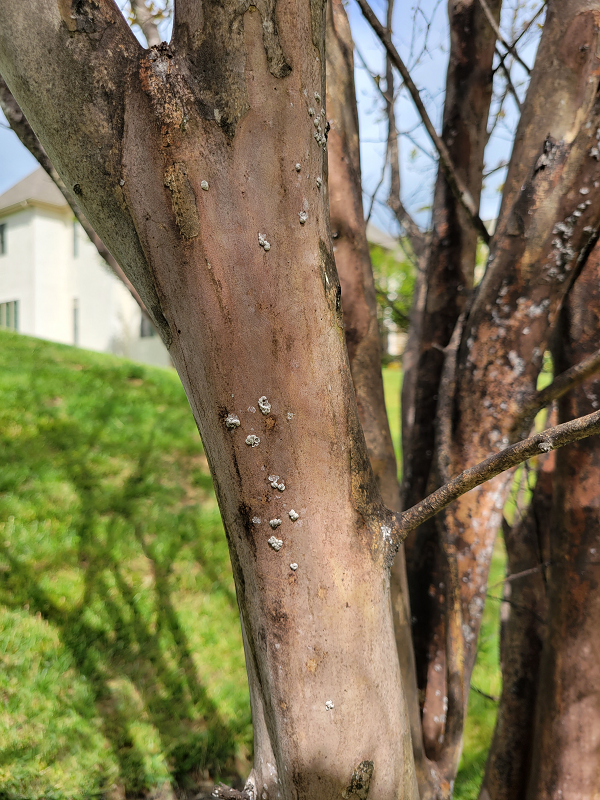
With large numbers of CMBS, the presence of these insects on trees is very clear; however, with newer or smaller infestations, most signs will be seen in the following:
- At pruning cuts
- In branch unions
- On the underside of upper branches
A correlation between trees growing in the shade and more significant CMBS damage has been found, meaning that trees in full sun are either less prone to infestation or damage is less pronounced in full-sun trees. According to preliminary data taken in Texas, significant differences exist in the rate or density of infestation by various crape myrtle. The data found no varieties to be resistant to CMBS. However, some were worse than others, and CMBS has been found to infest all types of crape myrtle available in USDA Zone 6 (most of Pennsylvania).
Life Cycle of the Crape Myrtle Bark Scale
Through most of the range of CMBS in the United States, this insect has 2-3 generations per year, and in the northern edge of the known range (Pennsylvania), the hypothesis is that only 1-2 generations will form, given the shorter growing season. Each generation takes 3-4 months to complete development (from adult to adult). However, the number of generations in any particular area can be challenging to determine since all life stages are capable of overwintering.
Newly hatched eggs (for scale insects, this stage is known as crawlers) are the most mobile and most vulnerable life stage. Therefore, most chemical control products recommend treatment to coincide with egg hatch/crawler activity. Eggs are most likely to hatch after about 10 days at or near 80oF, and in the Philadelphia area, we expect that egg hatch will occur in late May or early June (~650-750 degree days).
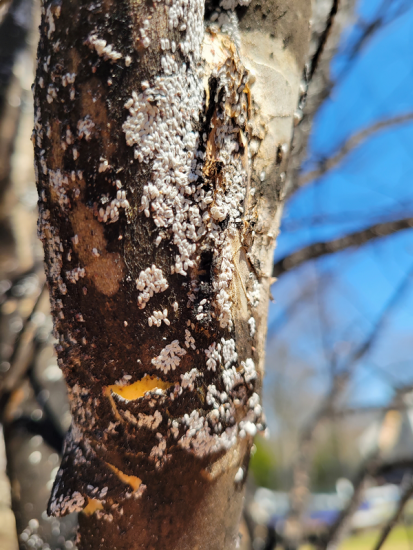
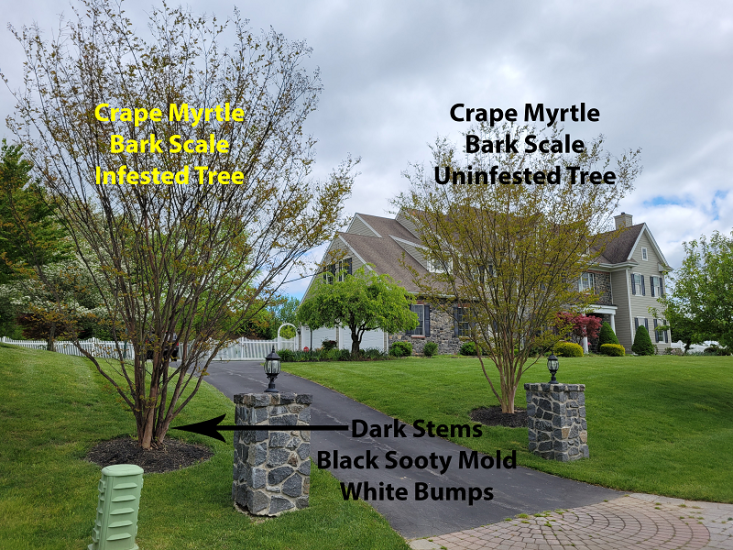
What Plants Are Affected
In its native range (China, Japan, and Korea), CMBS has reported many plants of economic importance, including apple, soybean, blackberry, and Korean boxwood. However, this pest is most associated in Asia with crape myrtle, persimmon, and pomegranate. In trials done in the US, CMBS has been found on 5 plants reported from Asia, aside from crape myrtle. Plants on which CMBS has been found in the US include St. John’s wort, American beautyberry, and recently spirea.
Treatment for Crape Myrtle Bark Scale
With invasive pests of landscape plants, population levels and damage can be explosive, and early detection is the key to effective management. Many strategies are available to manage this insect pest, from biological control agents (releasing of the pest’s natural enemies, ladybugs) to chemical controls (systemic insecticides or topical treatments). However, none will be as effective as is possible with the identification of the problem before damage becomes irreversible.
Contact Burkholder PHC for Treatment of Scale Insects in Landscape Plants
Crape Myrtle Bark Scale can be challenging to control due to their behavior and physiology. If crape myrtles are a signature species of your landscape, or if you have trees that appear to be declining, send us an email or give us a call and we will come out and conduct a plant health care evaluation, diagnose the problems, and let you know what your treatment options are. Burkholder PHC provides no cost identification of the problem in addition to free testing, diagnostics, inspections, and evaluations. Contact us today for a free consultation.

